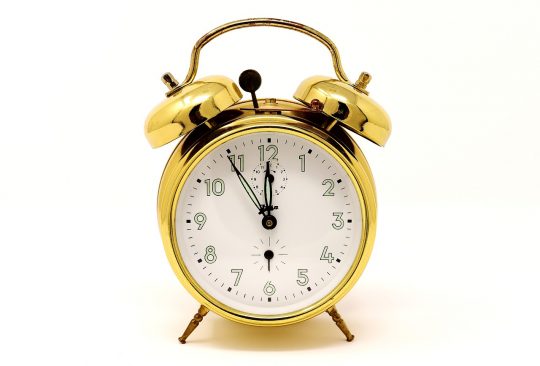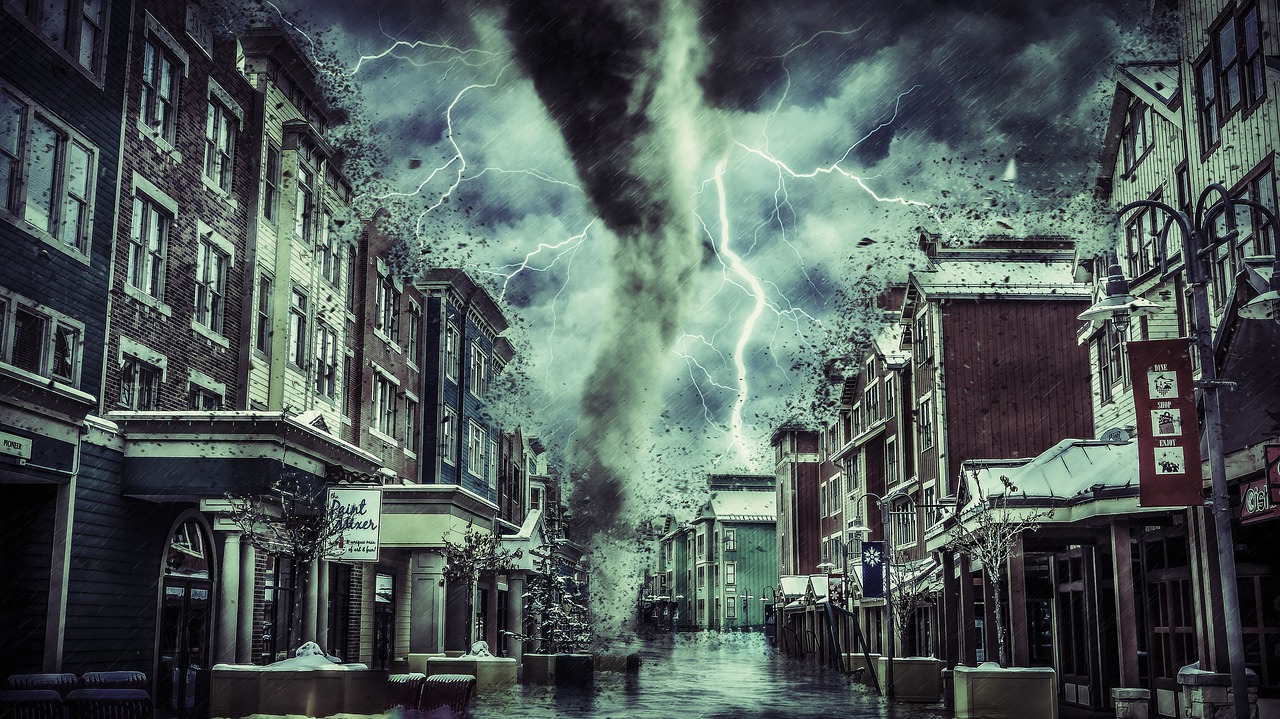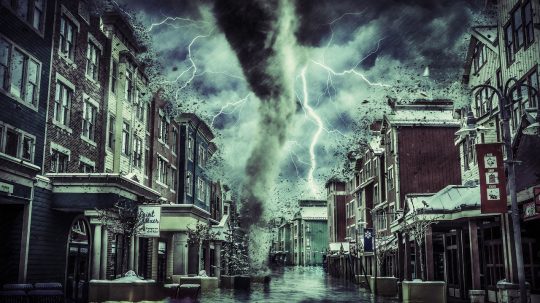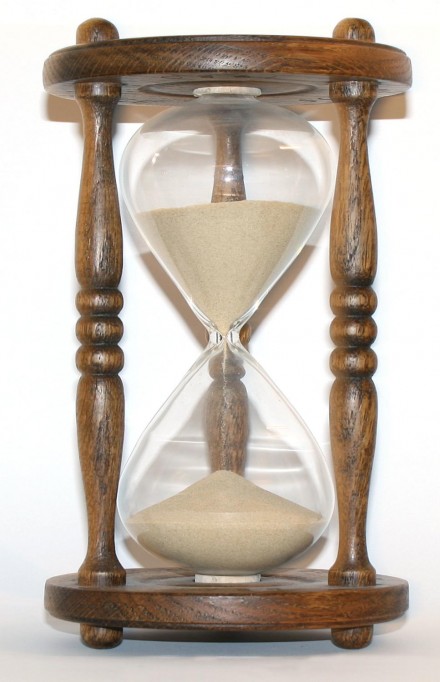 If nearly 40 percent of the entire nation anticipates spending the next 12 months in “survival mode”, that is not a good sign for what the coming year will bring. Traditionally, Americans have looked forward to the turn of the year with tremendous optimism, but this time around things are very, very different. 2020 brought us the COVID pandemic, tremendous violence and civil unrest in our major cities, and the greatest economic downturn since the Great Depression of the 1930s. Sadly, a large chunk of the country is anticipating more difficulties in the coming months, because one recent survey found that 38 percent of all Americans plan to spend 2021 in “survival mode”…
If nearly 40 percent of the entire nation anticipates spending the next 12 months in “survival mode”, that is not a good sign for what the coming year will bring. Traditionally, Americans have looked forward to the turn of the year with tremendous optimism, but this time around things are very, very different. 2020 brought us the COVID pandemic, tremendous violence and civil unrest in our major cities, and the greatest economic downturn since the Great Depression of the 1930s. Sadly, a large chunk of the country is anticipating more difficulties in the coming months, because one recent survey found that 38 percent of all Americans plan to spend 2021 in “survival mode”…
Of the 3,011 surveyed adults, over 38% said they will spend the year in “survival mode,” meaning they’ll focus on the day-to-day rather than long-term goals to try to get themselves and their families through 2021.
The biggest reason why so many anticipate being in “survival mode” is because of the financial problems that they experienced this year. According to that same survey, a whopping 68 percent of all Americans say that they experienced some sort of “financial setback” in 2020…
Although some respondents maintained their usual income over the past year, 68% had setbacks. Of those, 23% lost a job or household income; 20% had an unexpected non-health emergency; 18% had to provide unexpected financial aid to family or friends; and 16% had a health emergency in their family.
As I keep reminding my readers, Americans have filed more than 70 million new claims for unemployment benefits this year, but even many of those that have been able to keep their jobs have fallen on very hard times.
Another new survey found that approximately one-third of all full-time workers in the U.S. “have experienced a pay cut” in 2020…
Roughly 1 in 3 full-time workers have experienced a pay cut due to the coronavirus pandemic this year, according to a recent MagnifyMoney survey of 984 professionals surveyed Nov. 6 to 11.
If you were employed throughout all of 2020 and you are still able to pay all of your bills on time, you should be very thankful for your blessings, because you are now in the minority.
For most Americans, the past 12 months have been exceedingly painful, and this new round of lockdowns promises to extend the economic suffering long into 2021.
Some industries that were absolutely devastated by the first round of lockdowns are officially in panic mode at this point. For example, we have already permanently lost approximately 17 percent of all of the restaurants in the entire country, and the National Restaurant Association is warning that 10,000 more could permanently shut down “in the next three weeks”…
About 17% of America’s restaurants have already permanently closed this year, with thousands more on the brink according to a new report.
The National Restaurant Association is publicly pleading with Congress to pass new stimulus to help the industry that has been damaged by the pandemic. The group said Monday that 10,000 restaurants could close in the next three weeks, in addition to the 110,000 that have already shuttered in 2020.
Even during the best of times, running a successful restaurant is exceedingly difficult. The margins are razor thin, new competition is always popping up, and employees are constantly coming and going.
When you add a global pandemic on top of all of that, it has become almost impossible for many eateries to keep going, and we are being told that the future for the industry looks quite “bleak”…
- 87% of full-service restaurants (independent, chain, and franchise) report an average 36% drop in sales revenue. For an industry with an average profit margin of 5%-6%, this is simply unsustainable. 83% of full-service operators expect sales to be even worse over the next three months.
- Although sales are significantly lower for most independent and franchise owners, their costs have not fallen by a proportional level. 59% of operators say their total labor costs (as a percentage of sales) are higher than they were pre-pandemic.
- The future remains bleak. 58% of chain and independent full-service operators expect continued furloughs and layoffs for at least the next three months.
Of course it isn’t just the restaurant industry that is laying off workers in large numbers.
Just about every day there are more major layoff announcements in the news, and many experts are expecting the job loss numbers to accelerate as we make the transition into 2021.
Without paychecks coming in, millions of unemployed Americans are unable to pay the bills, and we are being warned that we could be facing a historic tsunami of evictions starting just after the holiday season…
The day after Christmas, the extended unemployment benefits that have kept 12 million people and their families afloat are scheduled to expire. Then, mere days after that cliff, on New Year’s Day, a national ban on renter evictions from the Centers for Disease Control and Prevention is also set to lapse.
Overnight, an unprecedented bill of $70 billion in unpaid back rent and utilities will come due, according to estimates by Moody’s Analytics Chief Economist Mark Zandi. In all, up to 40 million people could be threatened with eviction over the coming months, research from the Aspen Institute says.
The politicians insist that they are keeping us caged up for our own good, but the truth is that they are absolutely destroying millions upon millions of lives in the process.
There is a lot of debate about whether or not the lockdowns have helped to prevent the spread of the virus, but what we do know is that thousands of businesses have been permanently destroyed, millions of jobs have been lost, more people are committing suicide, and Americans are increasingly engaging in self-destructive behaviors…
Overall, one in three Americans report binge drinking during the coronavirus pandemic. The average person also reports spending about four weeks in lockdown this year; spending 21 hours a day at home. More than seven in 10 people in the survey did not even leave their home for work.
If we cannot even handle the COVID pandemic, how in the world is our society going to be able to handle what else is coming?
As things continue to unravel all around us, people are going to be in great need of hope.
Millions of Americans are already in “survival mode”, and the road ahead is certainly not going to get any easier.
***Michael’s new book entitled “Lost Prophecies Of The Future Of America” is now available in paperback and for the Kindle on Amazon.***
About the Author: My name is Michael Snyder and my brand new book entitled “Lost Prophecies Of The Future Of America” is now available on Amazon.com. In addition to my new book, I have written four others that are available on Amazon.com including The Beginning Of The End, Get Prepared Now, and Living A Life That Really Matters. (#CommissionsEarned) By purchasing the books you help to support the work that my wife and I are doing, and by giving it to others you help to multiply the impact that we are having on people all over the globe. I have published thousands of articles on The Economic Collapse Blog, End Of The American Dream and The Most Important News, and the articles that I publish on those sites are republished on dozens of other prominent websites all over the globe. I always freely and happily allow others to republish my articles on their own websites, but I also ask that they include this “About the Author” section with each article. The material contained in this article is for general information purposes only, and readers should consult licensed professionals before making any legal, business, financial or health decisions. I encourage you to follow me on social media on Facebook, Twitter and Parler, and any way that you can share these articles with others is a great help. During these very challenging times, people will need hope more than ever before, and it is our goal to share the gospel of Jesus Christ with as many people as we possibly can.














